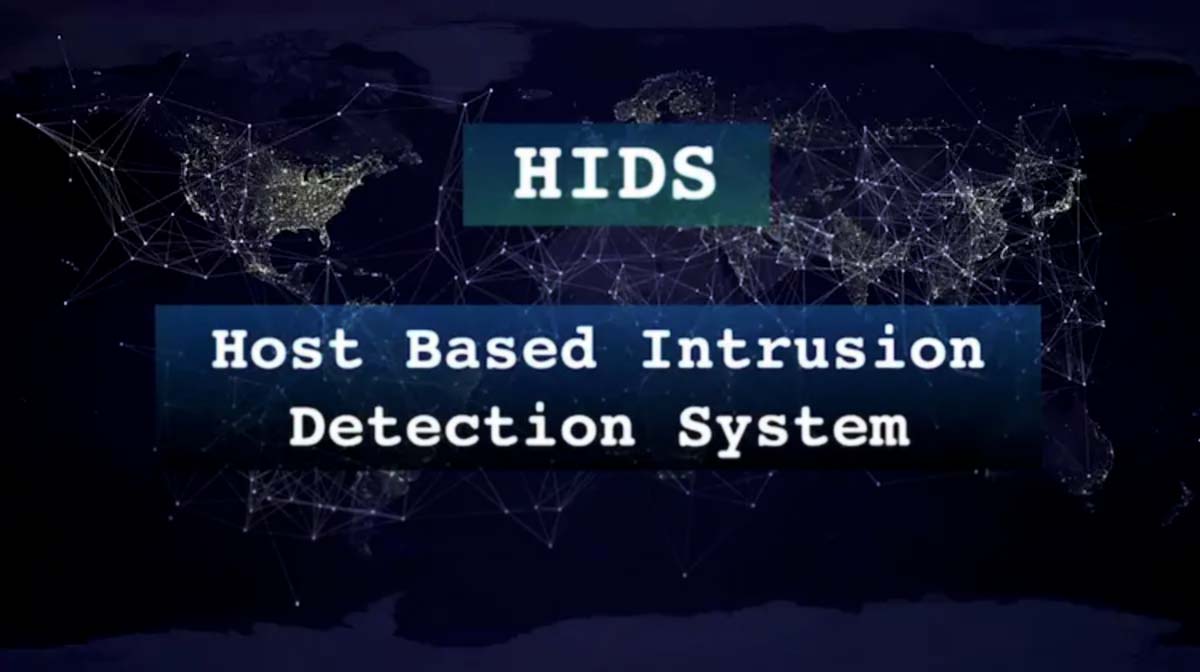Home>Home Security and Surveillance>What Functions Can An Intrusion Detection System Perform


Home Security and Surveillance
What Functions Can An Intrusion Detection System Perform
Modified: October 21, 2024
Discover the various functions of an Intrusion Detection System for home-security-and-surveillance. Enhance your safety with advanced detection capabilities and real-time alerts.
(Many of the links in this article redirect to a specific reviewed product. Your purchase of these products through affiliate links helps to generate commission for Storables.com, at no extra cost. Learn more)
Introduction
Welcome to the world of home security and surveillance. In today’s fast-paced and increasingly digital society, it is more important than ever to prioritize the safety and protection of our homes and loved ones. One of the key components of a comprehensive home security system is an intrusion detection system (IDS).
An intrusion detection system is designed to monitor and analyze network traffic, detect suspicious behavior, and alert homeowners in real-time. With the advancements in technology, IDS has become more sophisticated, offering a range of functions to strengthen home security.
In this article, we will explore the various functions that an intrusion detection system can perform, helping you understand the importance of integrating this security measure into your home. So, let’s dive in!
Key Takeaways:
- Stay Protected
Intrusion Detection Systems (IDS) monitor network traffic, detect suspicious behavior, and alert homeowners in real-time. They provide insights, alerts, and capabilities to enhance home security and protect against potential threats. - Be Proactive
IDS systems offer real-time alerting, incident response, log analysis, forensic analysis, compliance monitoring, and network traffic analysis. By integrating IDS, homeowners can proactively detect, respond to, and mitigate security incidents.
Network Monitoring
One of the primary functions of an intrusion detection system is network monitoring. It continuously scans and analyzes network traffic, allowing homeowners to gain insights into the devices connected to their home network.
Network monitoring provides valuable information about the devices’ IP addresses, MAC addresses, and the type of traffic they generate. This helps homeowners identify any unauthorized or suspicious devices that may be attempting to access their network.
Moreover, an IDS can detect any abnormal behavior within the network, such as an unusually high number of connection attempts or data transfers. This proactive monitoring allows homeowners to identify potential security threats and take appropriate actions to mitigate them.
By having a robust network monitoring system in place, homeowners can have peace of mind knowing that any unauthorized activity within their network will be promptly detected and reported.
Additionally, network monitoring enables homeowners to monitor their network bandwidth usage. By tracking the network traffic, they can identify any devices or applications that are consuming excessive bandwidth. This information allows homeowners to optimize their network performance and prevent any network congestion issues.
Furthermore, an intrusion detection system can also monitor network ports and protocols. It checks if any unauthorized ports are being used or if any unusual protocols are being employed within the network. This helps identify potential vulnerabilities and ensures that the network is securely configured.
In summary, network monitoring is a crucial function of an intrusion detection system. It provides homeowners with real-time visibility into their home network, allowing them to detect suspicious devices, monitor bandwidth usage, and ensure network security.
Detecting Suspicious Behavior
Another vital function of an intrusion detection system (IDS) is to detect suspicious behavior within the home network. This function helps identify any potential threats or attacks in real-time and provides homeowners with the opportunity to respond swiftly.
An IDS utilizes various detection techniques to identify suspicious behavior. These techniques include signature-based detection, anomaly-based detection, and behavior-based detection.
Signature-based detection involves comparing network traffic patterns with known attack signatures. If a match is found, the IDS raises an alert, indicating a potential attack. This method is effective in detecting known threats, such as malware or hacking attempts.
Anomaly-based detection, on the other hand, focuses on detecting abnormalities or deviations from normal network behavior. The system establishes a baseline of normal network activity and flags any unusual patterns or behaviors. For example, if there is a sudden surge in data transfer or a significant increase in failed login attempts, the IDS recognizes these anomalies as potential security threats.
Behavior-based detection takes a step further by analyzing the behavior of individual devices on the network. It establishes normal behavioral patterns for each device and monitors for any deviations. For instance, if a connected device starts communicating with unusual IP addresses or accessing restricted resources, the IDS identifies this as suspicious behavior.
By combining these detection techniques, an intrusion detection system ensures comprehensive coverage and minimizes the risk of false positives or negatives. It provides homeowners with a proactive defense mechanism, allowing them to take necessary actions to safeguard their network.
In addition to network-based detection, some IDS systems also offer host-based detection capabilities. These systems monitor the activities and processes running on individual devices within the network. If any malicious processes or unusual behaviors are detected, the IDS alerts the homeowner, enabling immediate response and remediation.
In summary, the ability to detect and identify suspicious behavior is a critical aspect of an intrusion detection system. By employing various detection techniques, an IDS can effectively identify potential threats or attacks, allowing homeowners to respond promptly and protect their home network from security breaches.
Real-Time Alerting
Real-time alerting is a key function of an intrusion detection system (IDS) that ensures homeowners are promptly notified of any potential security breaches or suspicious activities.
When an IDS detects any unauthorized access, malicious activity, or other security threats, it generates an alert or notification to inform the homeowners. These alerts can be delivered through various means, including emails, SMS messages, mobile app notifications, or even audible alarms.
The real-time alerting feature allows homeowners to take immediate action to mitigate potential risks and protect their home and network. Upon receiving an alert, homeowners can investigate the incident further, assess the severity of the threat, and initiate appropriate response measures.
The timely notification provided by an IDS is invaluable, as it enables homeowners to respond quickly and decisively to potential security breaches. This can help prevent further damage or compromise to their home network and personal data.
Furthermore, IDS systems can be configured to provide different levels of alerting based on the severity of the threat. For example, low-level alerts may indicate suspicious behavior, while high-level alerts may signify a critical security incident, such as a brute force attack or an intrusion attempt.
Customizable alerting options allow homeowners to tailor the notifications based on their preferences and urgency levels. Some IDS systems also provide the capability to configure automated responses, such as blocking the IP address or applying temporary network restrictions, in response to specific security events.
In addition to real-time alerts for security incidents, an IDS can also generate regular reports summarizing network activity, security events, and potential vulnerabilities. These reports provide homeowners with a comprehensive overview of their home network’s security posture and assist in identifying any recurring patterns or trends.
In summary, real-time alerting is a crucial function of an IDS that ensures timely notification of potential security breaches. By receiving immediate alerts, homeowners can take proactive measures to protect their home network and minimize the impact of security incidents.
Incident Response
Incident response is a critical function of an intrusion detection system (IDS) that enables homeowners to effectively address and mitigate security incidents as they occur.
When an IDS detects a security breach or suspicious activity, it triggers an incident response process to help homeowners take the necessary steps to contain the incident, prevent further damage, and restore normalcy to their home network.
The incident response process typically involves the following steps:
- Alert Notification: The IDS sends a real-time alert to notify homeowners of the detected incident. This alert contains relevant details about the incident, such as the type of attack, affected devices, and the severity of the threat.
- Incident Investigation: Homeowners initiate an investigation to gather more information about the incident. They can access the IDS dashboard or monitoring system to analyze the captured data, such as network logs, traffic patterns, and device activities. This investigation helps in understanding the root cause and scope of the incident.
- Containment and Mitigation: Based on the findings of the investigation, homeowners implement measures to contain the incident and prevent further damage. This may involve isolating affected devices, blocking suspicious IP addresses, or temporarily disconnecting the compromised devices from the network.
- Remediation and Recovery: Once the incident is contained, homeowners focus on restoring normalcy to their home network. They apply necessary patches, update security configurations, and restore any affected data or systems. It is also crucial to identify and address any vulnerabilities or weaknesses that contributed to the incident.
- Post-Incident Analysis: After resolving the incident, homeowners conduct a post-incident analysis to gain insights and learn from the situation. They review the effectiveness of their incident response plan, identify areas for improvement, and update their security measures accordingly.
The incident response function of an IDS plays a vital role in minimizing the impact of security incidents and ensuring a swift recovery. By having a predefined incident response plan in place, homeowners can efficiently address and manage security breaches, mitigating potential damage to their home network and personal information.
In summary, incident response is a crucial function of an intrusion detection system that enables homeowners to quickly identify, contain, and recover from security incidents. It provides a structured approach to incident management, ensuring the protection and resilience of their home network.
An intrusion detection system can perform functions such as monitoring network traffic, detecting and alerting on potential security threats, and analyzing system logs for suspicious activity.
Log Analysis
Log analysis is an important function of an intrusion detection system (IDS) that involves the examination and analysis of log files generated by devices within the home network. These logs provide valuable insights into network activity, system events, and potential security incidents.
By analyzing log files, an IDS can detect patterns, anomalies, and suspicious activities that may indicate a security breach or unauthorized access. It helps homeowners and security professionals gain a deeper understanding of network behavior and identify any potential threats or vulnerabilities.
Log analysis involves the following key aspects:
- Log Collection: An IDS collects log files from various devices within the home network, such as routers, firewalls, and security cameras. These log files contain information such as login attempts, network connections, system events, and error messages.
- Log Parsing: Once the log files are collected, the IDS parses and organizes the data for analysis. It extracts relevant information from the logs, such as IP addresses, timestamps, and event descriptions, and structures it in a meaningful way.
- Correlation: The IDS correlates the log data from different devices and sources to identify relationships and patterns. This correlation helps in determining if certain events are related or if they collectively indicate a potential security incident.
- Anomaly Detection: Log analysis involves comparing current log data with historical data to identify any anomalies or deviations from normal behavior. For example, it may detect multiple failed login attempts from a specific IP address or unusual data transfer patterns that indicate a potential security threat.
- Alert Generation: Upon identifying suspicious log entries or patterns, the IDS generates alerts or notifications to inform homeowners or security personnel. These alerts provide real-time information about potential security incidents, enabling prompt response and mitigation.
- Forensic Analysis: Log analysis plays a crucial role in post-incident investigation and forensic analysis. Security professionals can analyze log data to understand the attack vectors, identify the extent of the compromise, and gather evidence for legal or investigative purposes.
By effectively analyzing log files, an IDS helps homeowners gain visibility into their home network’s security posture. It assists in identifying potential security threats, detecting unauthorized access attempts, and providing valuable information for security incident response.
In summary, log analysis is a vital function of an intrusion detection system. Through the collection, parsing, correlation, and anomaly detection of log data, it enhances network security by enabling the detection and response to security incidents in a timely and efficient manner.
Forensic Analysis
Forensic analysis is a crucial function of an intrusion detection system (IDS) that involves the comprehensive examination and investigation of security incidents to gather evidence, identify the root cause, and facilitate further legal or investigative actions.
When a security breach or incident occurs, an IDS helps in capturing and storing relevant data and log files, which can be used for forensic analysis. This data includes network traffic logs, system event logs, and any other pertinent information that can be useful in reconstructing the timeline and understanding the nature of the incident.
Forensic analysis includes the following key steps:
- Data Collection: The IDS collects and preserves all available data related to the security incident. This may include network traffic logs, system logs, firewall logs, intrusion detection system logs, and any relevant forensic artifacts.
- Data Preservation: It is essential to preserve the integrity and confidentiality of the collected data during analysis. The IDS ensures that the data remains unaltered and protected from unauthorized access.
- Data Reconstruction: Forensic analysis involves reconstructing the sequence of events leading up to the security incident. By analyzing the collected data, security professionals can identify the attack vectors, the compromised systems or devices, and the techniques used by the attacker.
- Timelining: Timelining is the process of creating a chronological timeline of activities based on the collected data. This helps establish the sequence of events and aids in understanding the progression and impact of the incident.
- Root Cause Analysis: In forensic analysis, the IDS helps in identifying the root cause of the security incident. It examines the different data sources for any indicators of compromise or vulnerabilities that were exploited.
- Evidence Extraction: Forensic analysis involves extracting relevant evidence from the collected data that can be used in legal or investigative proceedings. This evidence may include IP addresses, timestamps, communication records, and any other information that can establish intent, responsibility, or the extent of the incident.
- Reporting: Finally, the findings of the forensic analysis are documented in a detailed report. This report can be used for internal purposes, such as improving security measures, as well as for external purposes, such as legal proceedings or sharing information with law enforcement agencies.
Forensic analysis plays a crucial role in understanding security incidents, mitigating further damages, and ensuring accountability. It helps in the identification and apprehension of attackers, as well as in strengthening security measures to prevent similar incidents from occurring in the future.
In summary, forensic analysis is a fundamental function of an intrusion detection system. By collecting and analyzing relevant data, it aids in reconstructing the events surrounding a security incident, identifying the root cause, and extracting evidence for further actions.
Compliance Monitoring
Compliance monitoring is an important function of an intrusion detection system (IDS) that ensures adherence to industry standards, regulatory requirements, and internal security policies. It helps homeowners demonstrate their commitment to security and maintain a secure and compliant home network.
An IDS provides the necessary tools and capabilities to monitor and validate compliance with various standards and regulations, such as the Payment Card Industry Data Security Standard (PCI DSS), the General Data Protection Regulation (GDPR), or specific industry-specific regulations.
Here are some ways in which an IDS facilitates compliance monitoring:
- Continuous Monitoring: An IDS continuously monitors network traffic, device activities, and system logs to ensure compliance with predefined security requirements. It provides real-time visibility into potential non-compliant behavior or violations.
- Policy Enforcement: An IDS allows homeowners to define and enforce security policies specific to their organization or regulatory requirements. It can detect any deviations from the established policies and raise alerts or notifications for immediate action.
- Access Control Monitoring: Access control is a critical aspect of compliance. An IDS helps monitor user authentication and access control mechanisms to ensure that only authorized users have access to sensitive resources or data.
- Data Protection: An IDS can help monitor data integrity and protection mechanisms to ensure compliance with data protection regulations. It can detect any unauthorized attempts to access or tamper with sensitive data, such as personally identifiable information (PII) or financial records.
- Auditing and Reporting: Compliance monitoring involves the generation of audit logs and reports to demonstrate adherence to security policies and regulatory requirements. An IDS enables homeowners to generate comprehensive reports summarizing security events, policy violations, and compliance status.
- Threat Intelligence Integration: Many IDS systems integrate with threat intelligence feeds to stay updated with the latest threats and vulnerabilities. This integration helps in identifying potential compliance risks and taking proactive measures to address them.
- Automated Compliance Checks: To streamline the compliance monitoring process, an IDS can perform automated compliance checks on a regular basis. It can assess the network’s security posture, evaluate security controls, and identify any non-compliance issues that need to be addressed.
By actively monitoring and enforcing compliance requirements, an IDS helps homeowners mitigate security risks, avoid regulatory penalties, and build trust with customers and stakeholders. It provides the necessary visibility and control to maintain a compliant and secure home network.
In summary, compliance monitoring is a crucial function of an intrusion detection system. By monitoring security policies, access controls, data protection mechanisms, and generating audit logs and reports, an IDS assists homeowners in maintaining compliance with industry standards, regulations, and internal security requirements.
Network Traffic Analysis
Network traffic analysis is a fundamental function of an intrusion detection system (IDS) that involves the examination and evaluation of network traffic patterns to identify potential security threats or anomalies. By analyzing network traffic, an IDS can detect and respond to suspicious activities, unauthorized access attempts, and other security incidents in real-time.
Here are some key aspects of network traffic analysis:
- Packet Inspection: An IDS performs deep packet inspection, which involves the examination of individual packets of data transmitted over the network. This inspection allows the IDS to analyze packet headers and payloads, identify protocols and applications in use, and detect any irregularities or known attack signatures.
- Protocol Analysis: Network traffic analysis involves the analysis of network protocols to detect any protocol-based vulnerabilities or exploits. An IDS can identify abnormal protocol behavior, such as malformed packets or non-standard protocol usage, that may indicate a security threat.
- Traffic Monitoring: The IDS continuously monitors network traffic to capture and analyze communication patterns, session details, and data flows. It can identify suspicious patterns, such as a high volume of traffic from a single IP address, unusual port usage, or excessive data transfers, which may indicate a security breach or a potential distributed denial-of-service (DDoS) attack.
- Behavioral Analysis: An IDS can establish baseline behavior for devices and users on the network and compare current network traffic against these baselines. By detecting deviations from normal behavior, the IDS can identify potential security incidents. For example, excessive file uploads or abnormal data extraction from a server may indicate unauthorized access or data exfiltration.
- Flow Analysis: An IDS can analyze network flows, which provide a high-level view of communication patterns between devices. Flow analysis helps identify patterns of communication, visualize network connections, and detect anomalies or suspicious activities, such as unusual or unauthorized communication paths.
- Anomaly Detection: Network traffic analysis involves the identification of anomalies or deviations from established patterns. This may include unexpected spikes in data transfer, abnormal network behavior, or communication with known malicious IP addresses. An IDS uses anomaly detection techniques to raise alerts and enable prompt incident response.
- Threat Intelligence Integration: Many IDS systems integrate with threat intelligence feeds to stay updated with the latest known threats and attack vectors. This integration enhances network traffic analysis by enabling the identification of known malicious IP addresses, URLs, or patterns that may be present in the network traffic.
Network traffic analysis provides valuable insights into the health and security of a home network. It helps homeowners identify security threats, understand network usage patterns, and take proactive measures to protect their network and sensitive data.
In summary, network traffic analysis is a critical function of an intrusion detection system. By inspecting packets, analyzing protocols, monitoring traffic patterns, applying behavioral analysis, and integrating threat intelligence, an IDS enhances network security by identifying and responding to potential security threats in real-time.
Conclusion
An intrusion detection system (IDS) plays a crucial role in enhancing home security and surveillance. It offers various functions that empower homeowners to monitor and protect their home networks from potential threats and vulnerabilities.
From network monitoring and detecting suspicious behavior to real-time alerting and incident response, an IDS provides homeowners with the visibility, control, and proactive measures needed to secure their homes.
The functions discussed in this article highlight the versatility and effectiveness of IDS systems:
- Network Monitoring: IDS systems continuously monitor network traffic, providing homeowners with insights into the devices connected to their network and detecting any suspicious behavior or unauthorized access attempts.
- Detecting Suspicious Behavior: IDS systems employ various detection techniques to identify anomalies or deviations from normal behavior, helping homeowners detect potential security threats or attacks.
- Real-Time Alerting: IDS systems generate real-time alerts, notifying homeowners of potential security breaches or suspicious activities, allowing for immediate response and mitigation.
- Incident Response: IDS systems facilitate a structured incident response process, enabling homeowners to contain and mitigate security incidents, analyze the root cause, and recover from the impact.
- Log Analysis: IDS systems analyze log files to gain insights into network activity, system events, and potential security incidents, aiding in the detection and investigation of security breaches.
- Forensic Analysis: IDS systems support forensic analysis by collecting and preserving data related to security incidents, reconstructing events, identifying the root cause, and extracting evidence for further actions.
- Compliance Monitoring: IDS systems help homeowners monitor and enforce compliance with industry standards, regulatory requirements, and internal security policies, ensuring a secure and compliant home network.
- Network Traffic Analysis: IDS systems analyze network traffic, perform packet inspection, protocol analysis, behavioral analysis, and anomaly detection to identify potential security threats and vulnerabilities.
By integrating an intrusion detection system into their home security setup, homeowners can enhance the protection of their networks, devices, and sensitive information. IDS systems provide the necessary insights, alerts, and capabilities to detect, respond to, and mitigate potential security incidents in a timely manner.
Ultimately, investing in an IDS not only enhances home security but also grants homeowners peace of mind, knowing that they have robust measures in place to safeguard their homes and loved ones from the ever-evolving landscape of threats and vulnerabilities.
Frequently Asked Questions about What Functions Can An Intrusion Detection System Perform
Was this page helpful?
At Storables.com, we guarantee accurate and reliable information. Our content, validated by Expert Board Contributors, is crafted following stringent Editorial Policies. We're committed to providing you with well-researched, expert-backed insights for all your informational needs.













